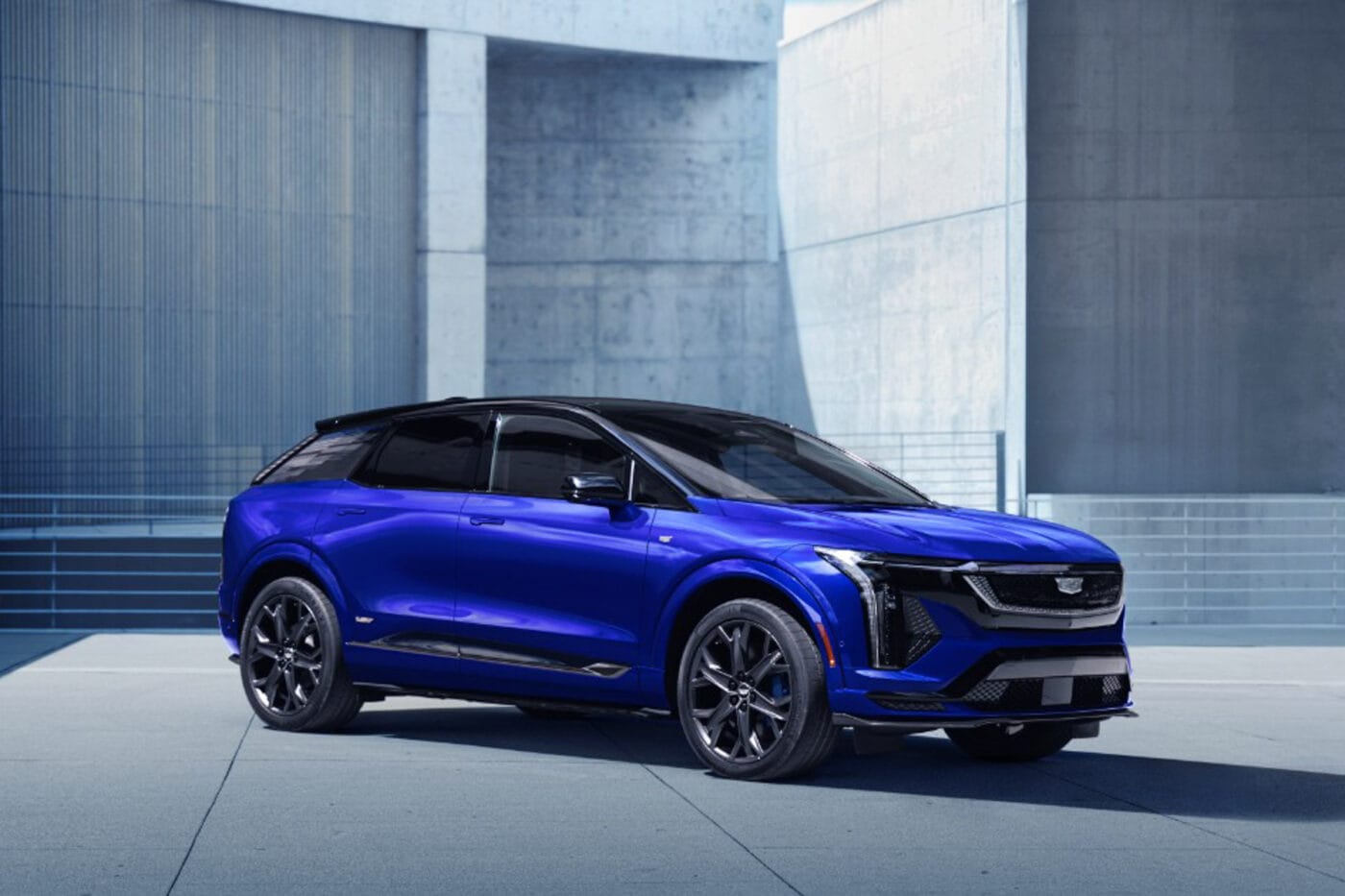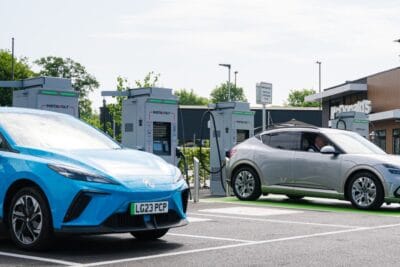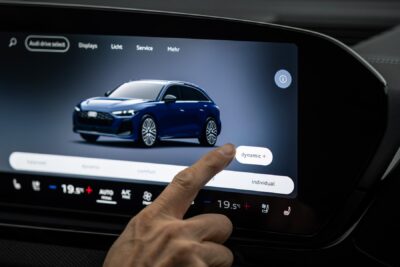Cadillac introduces new range-topping Optiq variant
Cadillac says the Optiq-V is set to define the V-Series’ “youthful and vibrant persona, sporty luxury design, and performance-driven power”. In ‘Velocity Max’ mode, the new variant delivers up to 382 kW (519 hp) and 880 Nm of torque. This enables the Optiq-V to accelerate from 0 to 60 mph (96 kph) in just 3.5 seconds. The 85 kWh battery is expected to provide an EPA range of 275 miles (442 kilometres).
The standard Optiq was introduced around a year ago as Cadillac’s smallest electric SUV to date. It features an all-wheel-drive setup with 220 kW of output and up to 480 Nm of torque. The same 85 kWh battery in the base model is rated for a range of 300 miles (483 kilometres) in the US-spec version. While Cadillac has confirmed plans to bring the Optiq to Europe following the Lyriq, technical specifications for the European version have not yet been released. The European Cadillac website even notes: “The images shown here may depict models intended for the US market and may differ from European models.”
Beyond the uprated drivetrain, the Optiq-V sets itself apart from the standard model with sporty design details such as a distinctive grille, 21-inch wheels, and V-Series badging. A more dynamic chassis setup is also included. “With Cadillac’s signature isolated precision ride and handling characteristic, tighter steering, enhanced suspension and summer-only tyres, our team delivered a unique package that makes OPTIQ-V a fun, nimble drive that’s quicker when cornering,” said John Cockburn, Chief Engineer for the Optiq-V.
Cadillac has yet to confirm if or when the Optiq-V will be offered in Europe. Production is scheduled to begin in autumn 2025, with initial markets including the US, Canada, Mexico, the Middle East, and Israel.
One notable feature in North America is the charging interface. The 2026 Optiq-V will be the first GM vehicle to feature a built-in NACS connector. GM plans to equip new models with the North American Charging Standard to enable direct access to Tesla Superchargers and other NACS-compatible infrastructure.
“Integrating the native NACS port into our vehicle architecture is an important step forward, reflecting our leadership in engineering and our commitment to providing our customers with more charging options,” Cockburn added.





0 Comments